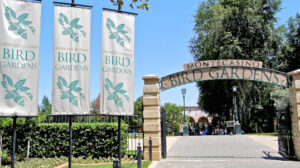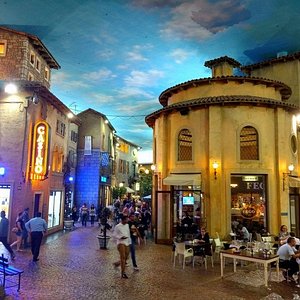Some Known Details About Johannesburg North Attractions
Some Known Details About Johannesburg North Attractions
Blog Article
5 Easy Facts About Johannesburg North Attractions Explained
Table of ContentsThe Greatest Guide To Johannesburg North AttractionsThe Only Guide for Johannesburg North AttractionsJohannesburg North Attractions - The FactsThe 6-Second Trick For Johannesburg North AttractionsThe Johannesburg North Attractions StatementsAbout Johannesburg North Attractions
The city expanded on the edge of the Witwatersrand Key Coral reef, a below ground stratum of gold-bearing quartz-silica conglomerate that arcs for hundreds of miles beneath the Highveld - Johannesburg North attractions. Many of the gold mines in the city discontinued operation in the 1970s, yet in its day the Witwatersrand gold market accounted for more than 40 percent of the globe's annual gold manufacturing.Johannesburg has a warm environment. The city takes pleasure in concerning eight hours of sunlight per day in both winter months and summertime.
What rainfall the city gets drops almost exclusively in the summer season, frequently in amazing late-afternoon electric storms. Air pollution poses a significant issue, specifically in the winter months, when thermal inversions impede the westward circulation of air from the Indian Sea. Pollution is most serious in the largely settled Black territories on the city's perimeter, where many homeowners still rely on coal for gas.

The Of Johannesburg North Attractions
The balance of the city is occupied by whites. Holiday accommodation varies in personality and quality.
Physical development, although somewhat restricted by transportation, proceeded rapidly as migration to South Africa, and Johannesburg specifically, enhanced substantially. This trouble was resolved in the 1930s when the vehicle was presented in automation to South Africa. Cars were, for the most part, constrained to the affluent, and allowed them to move to the north of the city and commute right into the centre.
Many inadequate residential areas were blended, with bad blacks and whites living together, although the wealthy suburbs were typically reserved for whites. This altered with the election of the National Event in the 1948 political elections, who began to formalise the system recognized as racism. Apartheid officially designated which suburbs each race can live in under the Team Areas Act.
The previous system of eleven phoned number regions was reorganised in 2006. Marshalltown, as seen from the top of the Carlton Centre. The M1 and M2 run behind the buildings, and the southern residential areas prolong past the freeway boundary. The internal city of Johannesburg is located within the city's Region F. The number of people living in the inner city on an informal basis is unidentified, as several are unlawful immigrants. The unemployment, education and learning, and age profiles of the location are all unknown, due to the trouble of acquiring trustworthy details regarding the location.
Johannesburg North Attractions Can Be Fun For Anyone
Yeoville and Bellevue have a mix of apartment structures and solitary household devices on small whole lots. The region is located on a hilly divide that runs from eastern to west.

Johannesburg Stadium, a training school for both the Golden Lions and Orlando Pirates, is nearby. The eastern suburban areas of Johannesburg are located in the city's 7th [] and 9th [] regions. The area is also functionally integrated with East Rand border towns outside of the official limit of Johannesburg, such as Bedfordview and Edenvale (both part of Ekurhuleni Metropolitan District).
Some Known Details About Johannesburg North Attractions
The eastern suburban areas are some of the oldest locations of Johannesburg, there are huge communities of Jewish and various other European histories, the majority of the population is English talking. There are three golf training courses as well as a number of safeguarded ridges with viewsites.
The location is mainly composed of old "matchbox" residences, or four-room residences developed by the government, that were developed to offer economical accommodation for black workers during apartheid. Soweto is an imp source abbreviation, representing "South Western Townships". Road after street in this location is lined with matchboxes; nevertheless, there are a few smaller great post to read areas where thriving Sowetans have built residences that are much more comparable in stature with those in more affluent suburbs.
Hostels are an additional noticeable physical function of Soweto. Originally constructed to house male migrant employees, numerous have been boosted as dwellings for pairs and family members. The N1 Western Bypass skirts the eastern limit of Soweto. The suburb was not historically permitted to develop work centres within the location, so nearly all of its homeowners are travelers to various other components of the city.
A Biased View of Johannesburg North Attractions
The N1 Western Bypass connects the north residential areas with the north-western suburbs. The houses in the northern suburban areas are generally official, with no substantial locations of casual real estate, or housing that does not have a permanent framework. Although this is an established area, there is a pattern of land usage change from domestic to commercial, especially along primary arterial roads and around established nodes.
The area is well linked to road networks, specifically along the north-south axis created by the M1 and N1. Roadways to the east and west are much less well developed, as there are no freeways taking a trip you can check here in that instructions. In the direction of the northern border of the city, the thickness of advancement decreases, leaving large locations of undeveloped land around Midrand.
Johannesburg North Attractions - The Facts
, which is located on a hill neglecting the inner city and Hillbrow.
Report this page